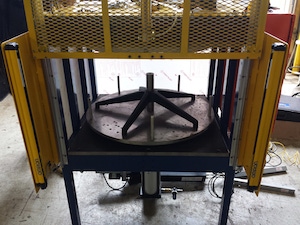A 'NEW' approach to technical education aims to ease worker shortage
July 14, 2016

Manufacturing workload runs in cycles, and one challenge for companies is making sure the labor pool matches demand. Tool and die positions have been particularly difficult for furniture maker KI (Green Bay, WI). As older workers retire, younger workers haven’t stepped up to fill those jobs, explained Andy Bushmaker, Senior Human Resources Manager.
Things are changing now. KI, which incorporates plastics in some of the furniture that it makes, is part of an alliance of manufacturers in Wisconsin that have teamed up with educators to bring manufacturing concepts to life in classrooms. Though Bushmaker once fretted about filling jobs, he is now upbeat as he sees more students pursue technical degrees. “With the enrollment increases, I’m not nearly as concerned anymore,” Bushmaker said.
The idea for the Northeast Wisconsin Manufacturing Alliance (called NEW) grew out of the worker shortage in the last decade, said Ann Franz, alliance Coordinator. Paul Rauscher, CEO of Hobart, WI-based EMT International, thought that by working with other manufacturers, companies could improve the overall labor pool. The small alliance he formed in 2006 now consists of 185 companies spanning 18 counties.
NEW initiatives address all types of manufacturing. In schools, manufacturing concepts are now part of mathematics and technical education classes, changes introduced by a joint task force of manufacturers and educators. The group’s monthly meetings led to curriculum changes that include a series of videos that apply math concepts to real manufacturing problems. Industry workers also spend time alongside students. In one example, KI partnered with a local high school for an entire academic year. Bushmaker said students initially did not believe their project addressed a true industry problem. Eventually, their ownership of the project was so strong that they continued working on it even after graduation so they could complete it. “It was much better than the projects they were given in a standard tech-ed class because this had a true, live purpose,” he said.
It’s still early to gauge NEW’s impact on job placements at KI. Bushmaker knows of two program graduates who now work at the company, but he noted that because concepts are being introduced as early as fourth and fifth grade, many students are years away from entering the workforce. Franz said the key measure for the alliance is the number of enrollees in technical colleges pursuing degrees with manufacturing applications. Welding, for example, totaled just 193 students in 2005, Franz said. In 2014, that figure was 734. NEW supports students beyond high school. To date, $147,000 in college scholarships have been awarded.
As the program’s popularity grows, Franz said it revealed a different type of worker shortage: Schools offer more technical education classes than ever, but they can’t find enough teachers to teach them.
|
Students in the technical education class at Denmark High School in Denmark, WI, designed a caster press under the leadership of NEW and KI. The students applied mathematical concepts learned in class to design the manufacturing equipment. |
|
The caster press designed by the students was subsequently built by professional engineers. |
About the Author(s)
You May Also Like




